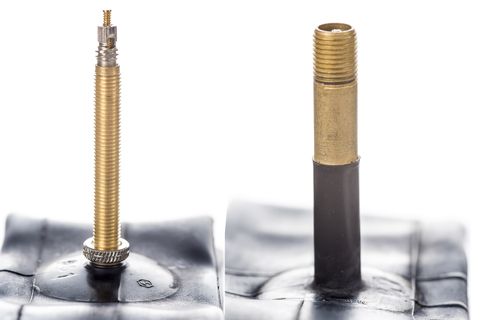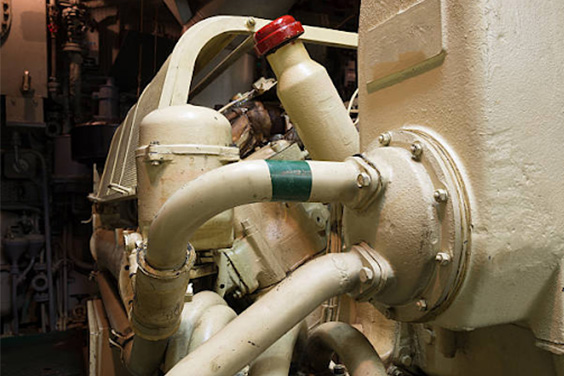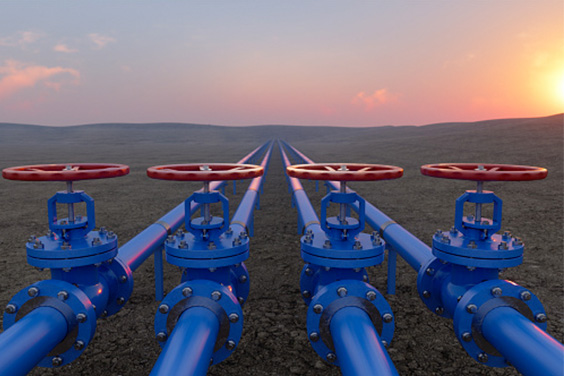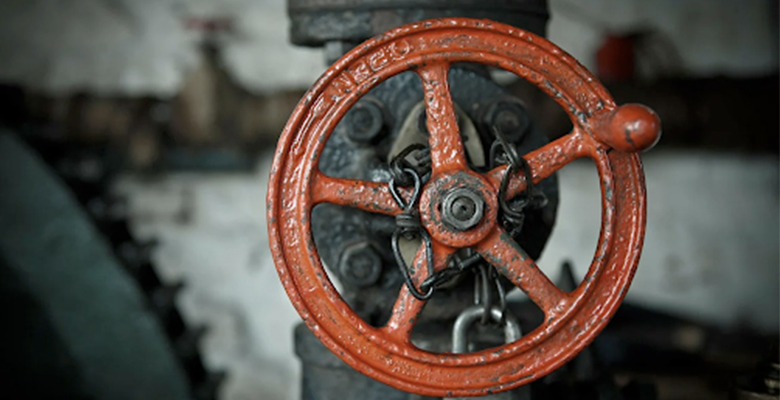Source: https://www.pinterest.com/pin/820429257114789380/
There are two common standards that are used in the valve industry. They include API 6D and API 598. The initial API stands for the American Petroleum Industry. Each of these standards has its own testing requirements. They are majorly used in oil and gas projects in the Middle East. Many project specifications will call for testing according to one of the two standards. This article will focus on the basic testing requirements of API 598.
Table of Contents

API 598
What Is API 598?
Source: https://en.siovalve.com/product-category/butterfly-valves/
The API 598 mainly covers the testing, inspection, and pressure test requirements for the ball, butterfly, gate, globe, and check valves. It has acceptable leakage rates for liquid and gas testing. All the valves that are built according to the different API standards are supposed to meet API 598 leakage criteria. That should happen before the valves are shipped from their manufacturers and suppliers.
Api 598 Standard
Source: https://en.siovalve.com/product-category/control-valves/
Api 598 standard inspects and tests new valves in industries, especially in the oil and gas industry. The higher testing pressure is used to verify the integrity of the new valves within a short duration of testing. The API 598 standard specifies the allowable leakage, the test duration, location, and the specific methods used in testing and inspection.
Api 598 refers to MSS-SP 55 for inspection of castings. This is a quality standard for steel casting for all the valves, fitting, flanges, and other piping components. MSS-SP 55 provides various industries with uniform means of identifying the different types of casting surface irregularities.
Api 598 Leakages

Source: https://en.siovalve.com/product-item/cast-stainless-steel-swing-check-valve-asme-b16-34/
Api 598 differentiates check valves from all the other valves in terms of allowable leakage rate. This is because check valves mainly depend on pressure force to seal, making it more difficult to seal. Api 598 states that for shell and back seat tests, no visible leakage is allowed through the external surface. The external surface includes the body, body liner, and the joints of the valves. In the case of backseats, it only applies to the globe and gate valves.
In the case of metal-to-metal butterfly valves, the interested party is allowed to specify the acceptable leakage rate. In case the fluid tested is in liquid form, there will be no visible leakage allowed. This is represented by zero in the table. If the fluid tested is a gas, no leakage should be detected using the detection method of their choice.
For the low and the high-pressure closure test, you will be able to spot the leakages through the disks located past the shaft seals or behind the seat rings. The table below shows the allowable rate of leakage of the test fluids( liquid or gas) past the seats for the duration of the set.
Below are examinations and tests specified in the API 598 standard.
| Size Of The Valve | Resilient Seated Valves | Metal Seated Valves (check valves)Liquid Test. Gas Test(Drops per minute). (Drops per minute) |
| Less than 2 | 0 | 2 3 |
| 2-6 | 0 | 2 3 |
| 8-12 | 0 | 2. 3 |
| More than 12 | 0 | 2. 3 |
| Size Of The Valve | Resilient Seated Valves | Metal Seated Valves (Except Check Valves)Liquid Test. Gas Test(Drops per minute). (Drops per minute) |
| Less than 2 | 0 or 1. 0 or 1 | |
| 2-6 | 12. 24 | |
| 8-13 | 20. 40 | |
| More than 12 | 28. 56 |
O drops mean there was no visible leakage within the set duration. 0 bubbles mean less than 1 bubble per minimum specified duration of the test. 1 mm is equivalent to 16 drops of either the liquid or gas being tested. The maximum leakage rate permitted is 3 cubic centimeters per inch of a normal size pipe. The maximum leakage rate that is permitted in the case of gas is 1.5 standard cubic feet per hour inch of the normal size of pipes.
API 598 Inspection
Source: https://en.siovalve.com/product-item/stainless-steel-flange-ball-valve-ansi-150-300/
The standard inspection based on API 598 can be done visually. The visual examination of castings should be performed to ensure the valves are in conformance with MSS SP-55. Inspection of the valves is mainly carried out by the manufacturer, the purchaser, and an agent who is the third party.
There is a list of documents that should be produced before the valve inspection. The inspector will then witness the material identification on the certificates against the materials. Upon completion of the valve material inspection, an inspection visit report is issued.
API 598 Testing
Source: https://en.siovalve.com/product-category/ball-valves/
The tests specified in API 598 standard include the shell, back seat, low-pressure closure, and the high-pressure closure test. High-pressure closure and shell test fluid include air, inert gas, kerosene, water, and other non-corrosive liquids which have a viscosity not higher than water. For low pressure and back seat pressure, the test fluid is air and inert gas.
API 598 Vs. API 6D
There is a broad range of standards to adhere to when manufacturing a floating ball valve. One of the most prominent associations is the American Petroleum Institute, abbreviated as API, which is the standard used for ball valves in oil, gas, and other petroleum industries. Others include ASME and MSS. The valves are passed through specific examination criteria covering the required design’s functionality. A valve needs to conform to these standards, as faulty valves can bring dangerous situations, like leakages and poor pressure management. Several associations have implemented these regulations to create a safe manufacturing environment for personnel and administrators.
One such association, formed by about 650 firms, is the API. There are different standards among API itself. However, two of the most used ones are API 598 and API 6D. The differences are as follows:
API 598
Definition
Created and established by the American Petroleum Institute, API 598 provides detailed requirements and specifications to prevent valve leakages and dangerous situations in the setting. At present, one can find it in the 9th edition. Published and incorporated in 2009, they cover ball valves with different types of seating. Some of them are as follows:
- Non-metallic
- Resilient
- Metallic
Not only specifying the analytical procedures and incorporating examination techniques, but the API standard also covers many models for ball valves- like a plug, floating, glove, butterfly, and trunnion.
Main Purpose
API 598 is assigned to test and observe the valve, most commonly for plug valves, globe valves, butterfly valves, and other ball valves. It tests the pressure capacity of the valves.
Tests
- Visual assessments
- Backseat examinations
- Shell tests
- Closure examinations
Test Duration
- 2 NPS: 1 minute
- 6 NPS: 3 minutes
- 14 NPS: 8 minutes
- 16 NPS: 10 minutes
API 6D
Definition
API 6D primarily revolved around valves integrated with long gas pipelines transferring heavy fluids. An API 6D standard ball valve is much more environmentally friendly and economically viable. Various structural changes and designs are incorporated into the ball valve to ensure proper securing and sealant functions. Huge cavities will prevent debris and stones from compiling in the main body. If a ball valve is found to be an API 6D standard, it can do multiple functions. Some of the parts are given below but are not limited to:
- Clearance
- Overpressure handling and assistance
- Lubricant applications
- Leaking observation
- Blowdown
Main Purpose
API 6D involves rigorous examination and testing procedures. Manufacturers usually prefer those ball valves to have an API 6D standard, even if they have been made primarily of other API specifications.
Tests
- Hydrostatic shell tests
- Stem backseat test
- Hydrostatic seat test
Test Duration
- 4 NPS size valves: 2 minutes
- 6 NPS size valves: 5 minutes
- 18 NPS size valves: 15 minutes
- 20 NPS size valves: 30 minutes
Conclusion
While testing the pressure that new valves can take, it is crucial to understand that there are certain valve designs that can be damaged in the process. They cannot withstand the very high pressure that is specified with API 598 standard high-pressure testing. For instance a softer valve seat. Always consult the manufacturer before the testing. As one of high pressure ball valves manufacturers, SIO could provide you with the proper valve according to the applications.








